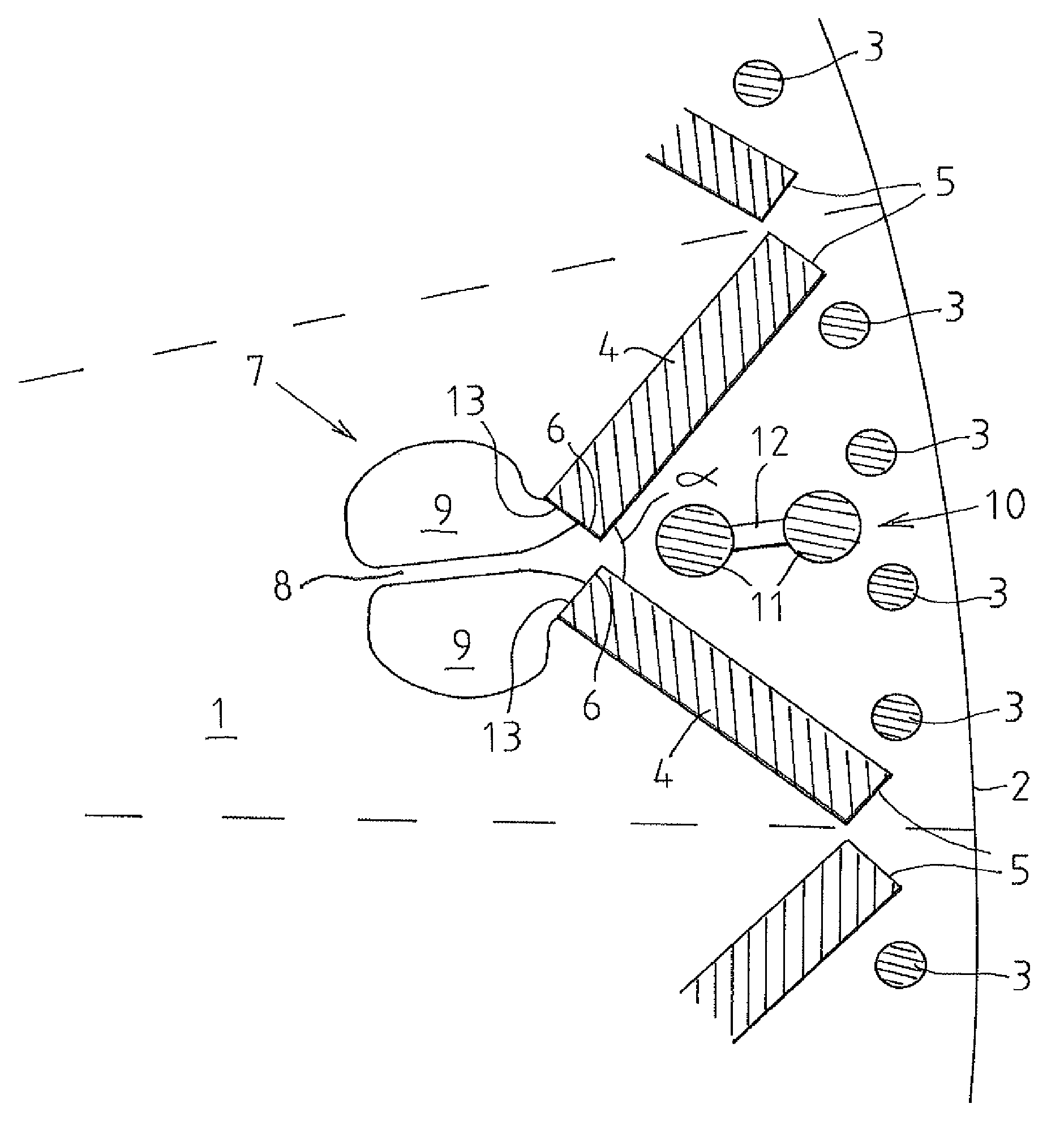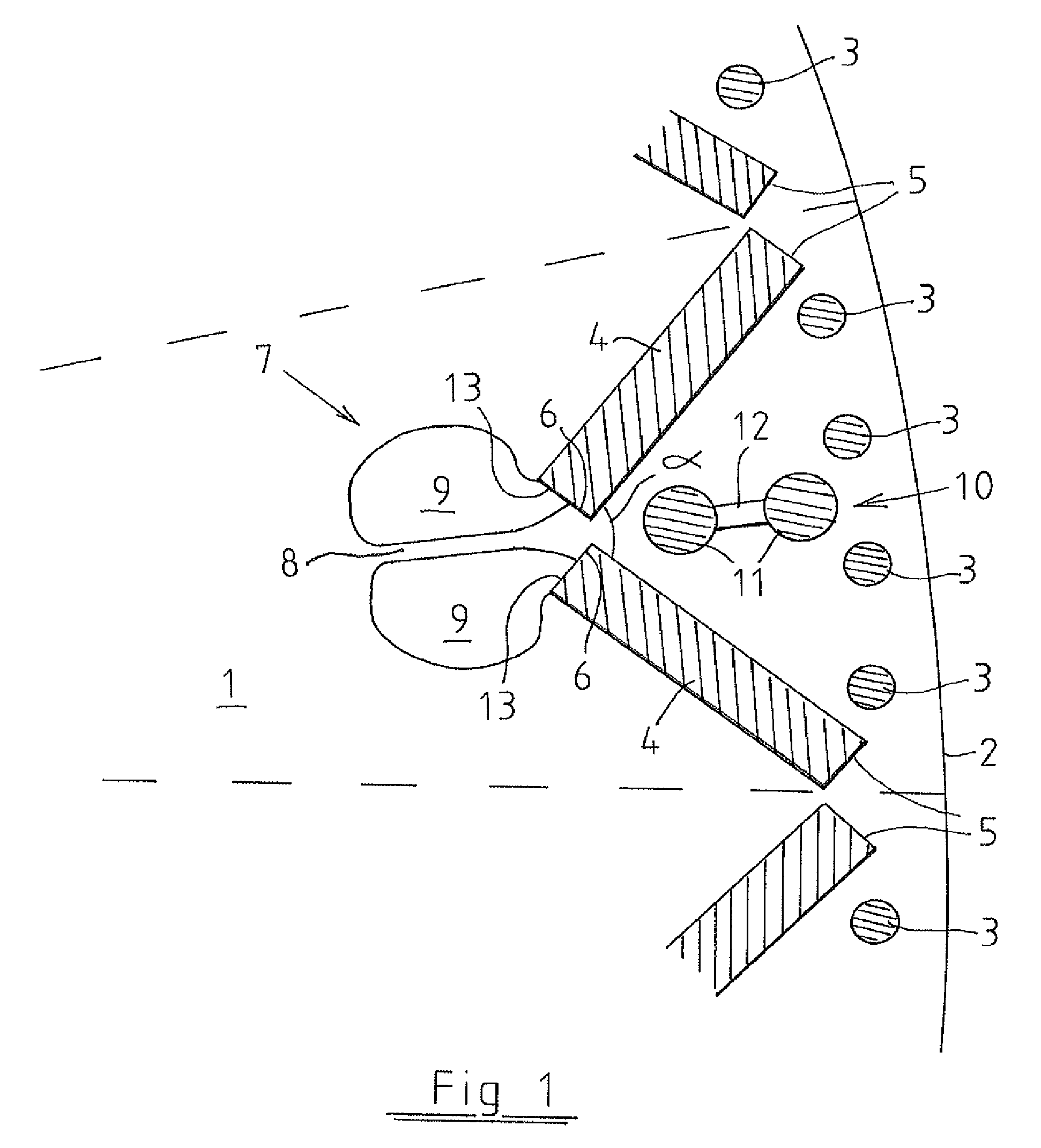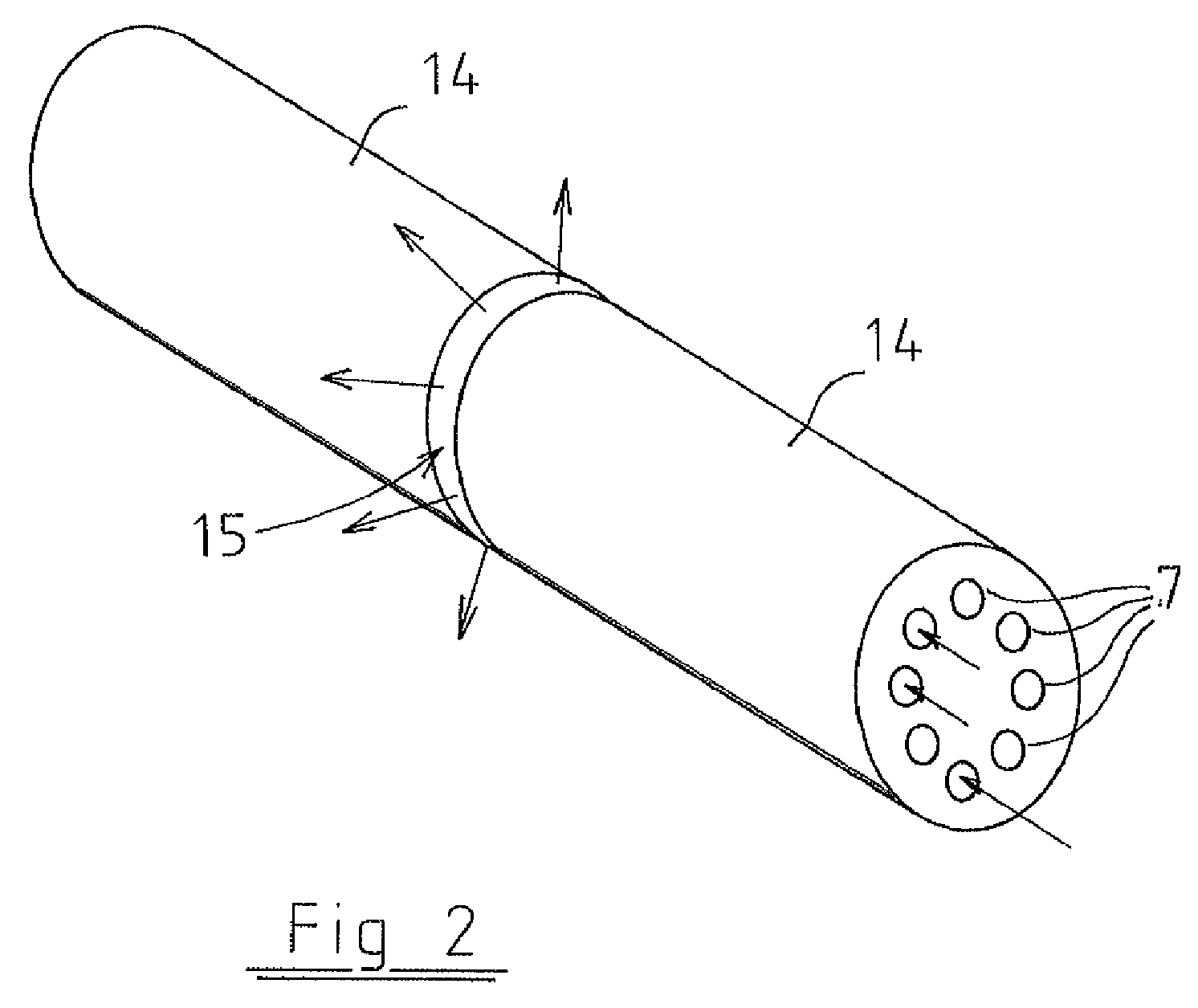Laminated rotor structure for a permanent magnet synchronous machine
a technology of synchronous machines and rotors, which is applied in the direction of dynamo-electric machines, magnetic circuit rotating parts, magnetic circuit shapes/forms/construction, etc., can solve the problems of leakage flux of rotors, and achieve the effect of minimizing leakage flux and preventing excessive heating of magnets
- Summary
- Abstract
- Description
- Claims
- Application Information
AI Technical Summary
Benefits of technology
Problems solved by technology
Method used
Image
Examples
Embodiment Construction
[0018]FIG. 1 presents the structure of a rotor that has been laminated from ferromagnetic disks in a permanent magnet synchronous machine. More specifically, a sectional view of a sector delimited by dash lines, including one V-shaped pair of permanent magnets. There may be a number of these kinds of sectors present in the rotor, for example at least eight or even much more.
[0019]The rotor thus consists of a large number of ferromagnetic round disks tightly disposed side by side as a single pack in the axial direction of the rotor. The structures included in the sector extend axially, identically and unchangeably, through the entire disk pack structure of the rotor. In proximity to the surface 2 of a disk 1 inside the rotor there are a number of generally copper-made bars 3 of a damper winding, connected in a manner known per se to copper short-circuiting rings disposed at each end of the rotor. Two permanent magnets 4 are disposed at an angle α to each other so that the first ends ...
PUM
 Login to View More
Login to View More Abstract
Description
Claims
Application Information
 Login to View More
Login to View More - R&D
- Intellectual Property
- Life Sciences
- Materials
- Tech Scout
- Unparalleled Data Quality
- Higher Quality Content
- 60% Fewer Hallucinations
Browse by: Latest US Patents, China's latest patents, Technical Efficacy Thesaurus, Application Domain, Technology Topic, Popular Technical Reports.
© 2025 PatSnap. All rights reserved.Legal|Privacy policy|Modern Slavery Act Transparency Statement|Sitemap|About US| Contact US: help@patsnap.com



